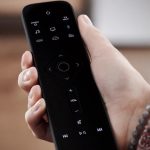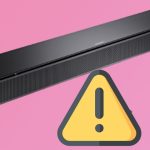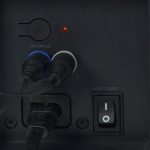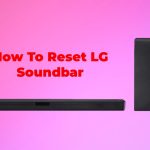You’ve upgraded to the Bose Soundbar for enhanced audio quality in your home theater. This soundbar offers immersive, clear sound with a powerful bass. Now, let me guide you through setting it up with your TV. Contrary to what you might think, connecting the Bose Soundbar to your TV is straightforward. Read on to determine the compatible connection for both devices and how to set them up seamlessly.
How to Connect Bose Soundbar to TV
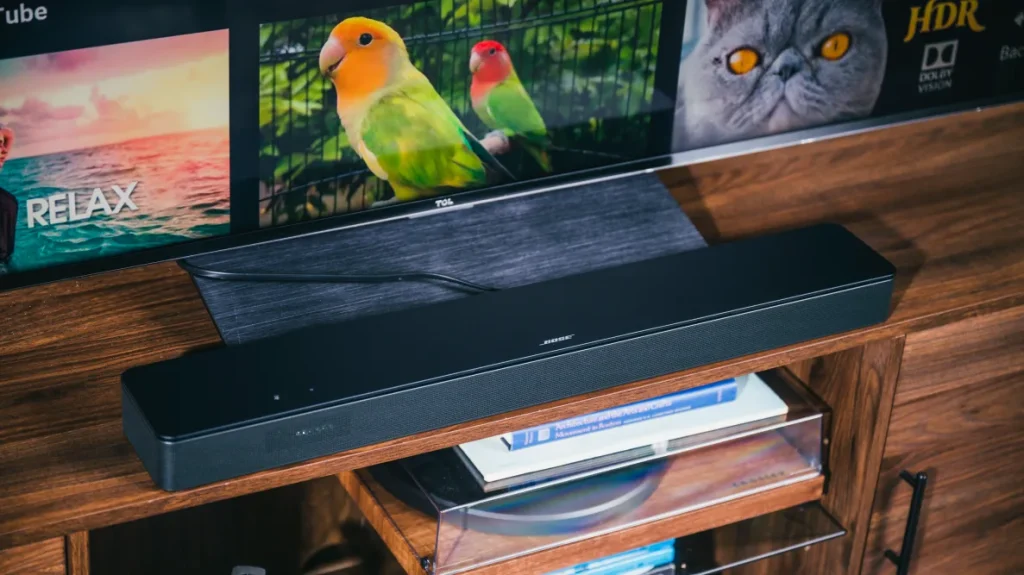
Check the Connection
Choosing the right connection type for your Bose Soundbar and TV is crucial. Ensure compatibility to avoid wasting time and resources. To determine the supported connection, inspect the available ports on both devices. Typically, there are four connection types: HDMI ARC/eARC, Optical, AUX (3.5mm), and Bluetooth. Let’s explore how to connect your Bose Soundbar to the TV using each of these options.
How To Connect Bose Soundbar To TV with HDMI ARC/eARC
If you discover an HDMI port labeled ARC or eARC on your TV while setting up the Bose Soundbar, you’re in luck! ARC and eARC connections offer superior audio and video quality, minimize cable clutter, and streamline your home theater setup. These connections utilize an Audio Return Channel, allowing both audio and video signals to travel on the same cable. For example, if you connect a Blu-ray player and a gaming console to your TV, you only need one HDMI ARC/eARC cable to link the TV to the soundbar. This setup ensures the video is displayed on the TV while the audio plays through the soundbar. Additionally, the HDMI ARC and eARC connections support high-quality audio formats like Dolby Atmos, Dolby True HD, Dolby Digital Plus, and DTS:X, enhancing your audio experience. Let’s dive into the steps to connect your Bose Soundbar using the HDMI ARC/eARC connection.
- Get an HDMI cable of standard 2.0 or 2.1 of the required length.
- Turn off your TV and Soundbar and unplug the power cords.
- Now, connect one end of the HDMI Cable to the HDMI-ARC OUT port on the soundbar and the other to the HDMI-ARC IN port on the TV.
- Next, plug the power cords back and Turn on the TV and soundbar.
- Next, navigate to the TV settings, select ARC for the Audio Output, and enable CEC.
- Congratulations! You’ve successfully set up the Bose soundbar to the TV through an HDMI ARC connection.
How To Connect Bose Soundbar To TV with Optical Cable
If your TV and Bose soundbar both have an OPTICAL port, you’ll use a Digital Optical connection. This connection employs optical cables that transmit data through light signals, offering a fast and interference-free connection. While it delivers quality audio, its bandwidth limitations mean it can’t support advanced audio formats like Dolby Digital and Dolby Atmos. Additionally, it lacks the CEC feature, which lets you control multiple devices with one remote. This connection type is common in older TV and soundbar models. Here are the steps to connect your Bose Soundbar to the TV using a Digital Optical Connection.
- Get an optical cable of the required length.
- Turn off the TV and Bose Soundbar and unplug the power cords.
- Now, locate the HDMI-ARC OUT on the back of your TV and plug in one end of the optical cable in this port.
- Next, plug in the other end of the Optical cable in the ARC IN port of the soundbar.
- Plug the power cords back in and Turn on your TV and Bose soundbar.
- Next, navigate to the TV settings and select Optical as the Audio output.
- Congratulations! You have successfully connected the Bose Soundbar to the TV using a Digital Optical Connection.
How To Connect Bose Soundbar To TV with Aux (3.5mm) Connection
If you discover AUX ports on both your TV and Bose Soundbar, it’s likely you’re using older models. Here’s how to connect your Bose Soundbar to the TV using an Aux (3.5mm) cable connection.
- Get a 3.5mm audio cable of the required length.
- Turn off your TV and Bose soundbar, and unplug the power cords.
- Now, locate the AUX port on your TV and Soundbar, usually labeled “AUX” or “AUDIO OUT.”
- Once you find the ports, connect one end of the 3.5mm audio cable in the AUDIO OUT port of the TV and the other one in a similar port on the Bose Soundbar.
- Plug the power cords back and Turn on your TV and Bose Soundbar.
- Navigate to the TV settings and select Audio Output from the menu.
- Set the Audio output to “AUX” or “Headphones.”
- Congratulations! You have successfully connected your TV to the Bose soundbar using an Aux or 3.5mm cable connection.
How To Connect Bose Soundbar To TV with Bluetooth connection
If both your Bose soundbar and TV support Bluetooth, you can connect them wirelessly. Here’s how to connect your Bose Soundbar to the TV using a Bluetooth connection. If you’re interested in more wireless options, learn how to connect your Bose Soundbar to Wi-Fi for even more flexibility.
- Turn on your TV and Bose Soundbar.
- Locate the Bluetooth button on your Bose Soundbar from the button panel on the top.
- Now, press and hold the Bluetooth button for a few seconds until you hear a beep or message that the soundbar is in pairing mode.
- Now, go to your TV settings and find Bluetooth Menu.
- Enable Bluetooth and allow it to search for nearby devices; wait until you see your Bose soundbar’s name in the list of devices.
- Select the Bose soundbar to start the pairing.
- Once connected, you can play music from your TV to the Bose soundbar.
Which connection is the best?
If your TV has multiple connection ports like HDMI ARC, Digital Optical, and AUX, prioritize the HDMI ARC connection. It offers benefits like reduced wire clutter, a single remote control for multiple devices, and support for high-quality audio formats like Dolby Atmos. If HDMI ARC isn’t available, choose the Digital Optical connection for better audio quality.
Troubleshooting Common Issues with Bose Soundbars
Based on the feedback and experiences shared by users, here are some common issues faced with Bose soundbars and their potential solutions:
- Auto-Connection Issues with HDMI-ARC
- Problem: After resetting the soundbar or a software update, the auto-connection feature becomes unreliable. The sound doesn’t route automatically to the soundbar when turned on with non-Bose controllers.
- Solution: Switch to using an optical cable instead of HDMI-ARC. Many users have found this to be a more reliable connection method. If you prefer HDMI-ARC, ensure that your TV’s CEC settings are correctly configured.
- Soundbar Not Turning On
- Problem: The soundbar doesn’t turn on after long periods of non-use.
- Solution: Unplug the power supply, wait for 30 seconds, plug it back in, wait for the soundbar to turn on, and then use the Bose remote to confirm the sound.
- Soundbar Not Syncing with TV
- Problem: Occasionally, after turning the TV off and on, the soundbar doesn’t sync with the TV, resulting in no sound.
- Solution: Unplug both the soundbar and the TV for a complete reboot. Ensure that the CEC settings are correctly configured for both devices.
- Connecting Bose Soundbar with Apple TV Remote
- Problem: Difficulty pairing the Bose soundbar with an Apple TV remote.
- Solution: Hold down the Bluetooth button on the Bose remote until a blue blinking light appears on the soundbar. This makes the soundbar discoverable by the Apple TV remote. Then, go to settings on the Apple TV, select Bluetooth devices, and choose the Bose soundbar.
- Bluetooth Connection Issues with Apple TV
- Problem: Every time the Bose TV Sound Bar, TV, and Apple TV box shut down using the ATV remote, the Bluetooth connection is lost.
- Solution: Ensure that the Bose soundbar and Apple TV box are placed close to each other. Check for any software/firmware updates and consider reaching out to customer support for further assistance.
- Soundbar Connection Issues with TV
- Problem: The Bose 900 soundbar occasionally doesn’t sync with certain TV models, resulting in no sound.
- Solution: Check the advanced CEC settings and configure them based on your TV model. Ensure that the firmware of your TV is up-to-date.
- Setting Up Soundbar with Limited TV Ports
- Problem: Difficulty setting up the Bose TV Speaker with a TV that has limited HDMI sockets.
- Solution: Consider using an HDMI switch box to expand the number of HDMI ports available. Ensure that the soundbar is connected to the HDMI ARC port on the TV and that the TV’s sound settings are set to use HDMI output.
- Sound Quality Concerns with Bluetooth Connection
- Problem: Concerns about the sound quality when connecting the Bose 900 soundbar to the TV using Bluetooth.
- Solution: While Bluetooth is convenient, for the best sound quality, it’s recommended to use a wired connection like HDMI or optical. If wires are a concern due to aesthetics, consider using wire concealers or wall mounts that hide the cables.
- Connecting Multiple Devices to Bose Soundbar
- Problem: Difficulty connecting multiple devices to the Bose soundbar and controlling the volume using a single remote.
- Solution: Connect the soundbar to the TV’s HDMI-ARC port. Then, connect all external devices to the TV’s remaining HDMI ports. Ensure that HDMI-CEC (or its equivalent, like Aquos Link for Sharp TVs) is enabled on the TV and all connected devices.
Conclusion
If you have reached this far, you must get the gear ready to connect the Bose Soundbar to the TV! So, leave that sofa and check the connection between your TV and Bose soundbar supports, buy the required compatible cable, and finally, set up the connection to enjoy the immersive audio in your home theater that you can flaunt in a group of friends, with pride.

I’m Shaun Conroy, an audiophile & founder of HiFi Audios. Holding a Bachelor’s in Sound Engineering, I bring deep expertise in audio devices and offer insights & recommendations to fellow enthusiasts.


